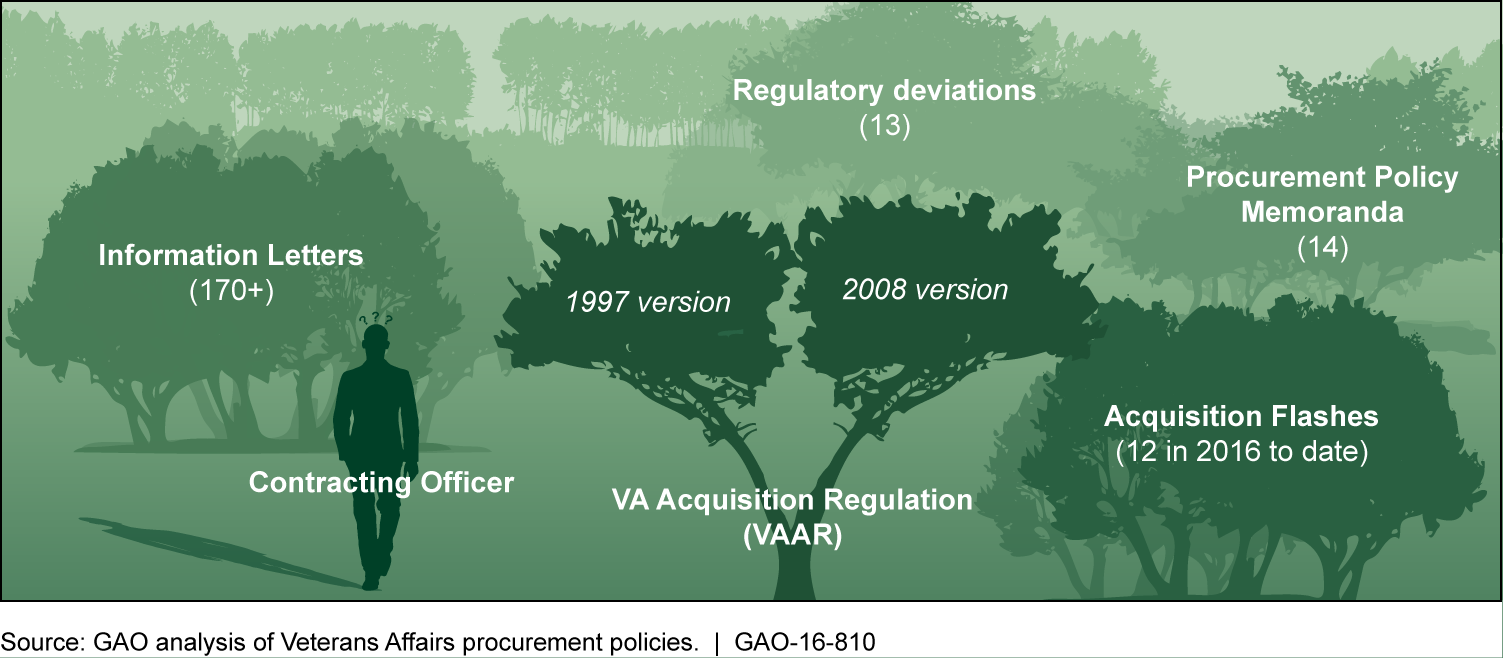Veterans Affairs Contracting: Improvements in Policies and Processes Could Yield Cost Savings and Efficiency
Fast Facts
The Department of Veterans Affairs spends billions of dollars annually to buy goods and services that serve veterans. However, VA's contracting staff must contend with policies that are out of date, as well as a complicated organizational structure, to fulfill their mission. VA also can't take full advantage of discounts for medical supplies due to issues such as obsolete systems.
To address these concerns, we recommended (in the report this testimony is based on) that VA clarify its policy framework, and increase the use of discounted pricing when purchasing medical supplies.
Michele Mackin, Director in our Acquisition and Sourcing Management team, testifying before Congress

Ms. Mackin speaking at hearing while seated at witness table
Highlights
What GAO Found
GAO found opportunities for the Department of Veterans Affairs (VA) to improve the efficiency and effectiveness of its multi-billion dollar annual procurement spending in several areas including data systems, procurement policies and oversight, acquisition workforce, and contract management.
Shortcomings in VA's recording of procurement data limit its visibility into the full extent of its spending. A recent policy directing that medical-surgical supply orders be captured in VA's procurement system is a step in the right direction, but proper implementation is at risk because procedures are not in place to ensure all obligations are recorded.
VA's procurement policy framework is outdated and fragmented. As a result, contracting officers are unclear where to turn for current guidance. VA has been revising its overarching procurement regulation since 2011 but completion is not expected until 2018. Meanwhile, contracting officers must consult two versions of this regulation, as well as other policy related documents. Clear policies are key to ensuring VA conducts procurements effectively on behalf of veterans. The figure below depicts the various sources of regulations, policy, and guidance.
Sources of Veterans Affairs (VA) Procurement Policy as of June 2016

Managing workload is a challenge for VA's contracting officers and their representatives in customer offices. A 2014 directive created contract liaisons at medical centers in part to address this issue, but medical centers have not consistently implemented this initiative, and VA officials have not identified the reasons for uneven implementation.
VA can improve its procurement processes and achieve cost savings by complying with applicable policy and regulation to obtain available discounts when procuring medical supplies; leveraging its buying power through strategic sourcing; ensuring key documents are included in the contract file, as GAO found that more than a third of the 37 contract files lacked key documents; and ensuring that compliance reviews identify all contract file shortcomings.
Why GAO Did This Study
This testimony summarizes the information contained in GAO's September 2016 report, entitled Veterans Affairs Contracting: Improvements in Policies and Processes Could Yield Cost Savings and Efficiency (GAO-16-810).
For more information, contact Michele Mackin at (202) 512-4841 or mackinm@gao.gov.
